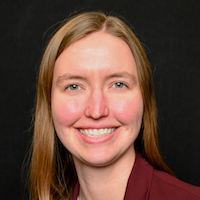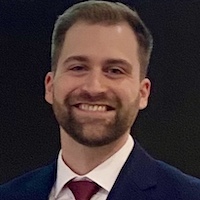Concerns about the novel coronavirus changed much on campus this spring, including how some doctoral candidates presented their research. But dissertation defenses proceeded, some of them virtually, maintaining the vital responsibility of a major research university to evaluate the work of Ph.D. candidates before they move on to their next posts.
In fact, the impressive research from the School of Engineering’s 2020 doctoral graduates could catalyze innovations across diverse fields, from aerospace to manufacturing and surgery to immunotherapy.
A few examples: a novel treatment for U.S. soldiers with severe arthritis; machine learning-based evaluation of engineered composites used in additive manufacturing; 3D-printed material for joining metals, with broad potential applications under the sea and in outer space; and magnetically guided robotic surgery to improve outcomes for patients who receive cochlear implants.
A typical Ph.D. defense unfolds in public, with the candidate presenting and his or her adviser plus four other faculty committee members asking questions. Friends, family and colleagues attend. Committee members confer privately before passing judgement, and celebration with hand-shakes, hugs and, at times, champagne quickly follows.

Not this year. Many of the semester’s Ph.D. students were able to defend before limits on in-person meetings started. But others defended via Zoom or other online platforms after labs started to close and all but essential employees began to work from home. And few landed in a narrow window during which on-campus dissertation defenses proceeded with very limited attendance.
“I feel very lucky I got to defend at all,” said Kelsay Neely, who presented her dissertation research in mechanical engineering during those few days.
Neely set up in a lab to show how a 3D-printed thermite paste she developed propagated in a controlled and programmable manner once it was ignited. She also demonstrated how the material as a portable heat source joined a sample aluminum lap joint by melting solder without damaging the fused material.
Her advisers were Alvin Strauss, professor of mechanical engineering, and Vanderbilt Director of Making Kevin Galloway, a research assistant professor of mechanical engineering. Some of her dissertation committee members attended in person; others kept up virtually. She was allowed to have one friend on hand for support.
“It felt weird not being able to shake the hands of my committee,” Neely said.
We’ve assembled snapshots of other, though not all, of the doctoral students who successfully defended their dissertations this spring:

- Emma Neal, chemical and biomolecular engineering, improved the differentiation of iPSCs to blood-brain-barrier endothelial cells in ways that markedly improve reproducibility of in vitro models while reducing the time and cost required. Combined with new gene editing technologies, the optimized platform will help identify genes and pathways in the BBB and guide future identification of neurodegenerative disease-modifying therapies. Neal, advised by Ethan Lippmann, assistant professor of chemical and biomolecular engineering, is now at VUMC’s Medical Innovators Development Program.
- Sean Bedingfield, biomedical engineering, developed a new targeting approach for treating post-traumatic osteoarthritis.

Sean Bedingfield The work was funded by the Department of Defense: soldiers often return from rigorous training, intense tours and injuries with severe arthritis at young ages. Rather than target specific cell types, such as surface receptors, Bedingfield used nanocarriers that act as anchors, keeping biologic drugs at sites where they are most needed for longer, and at more therapeutic doses. Traditional treatment, often involving cortisone injections, disburses quickly and can cause additional joint damage. Bedingfield was advised by Craig Duvall, Cornelius Vanderbilt Professor of Engineering.
Mason Hickman had planned to pack the room when he presented his dissertation defense in civil engineering. Instead, the classroom contained five people: Hickman, three family members who had traveled from South Carolina, and adviser P.K. Basu, professor of civil and environmental engineering.
Fortunately, Hickman, BE’13, had set up online access the night before because one of the other four committee members was out of town.

His civil engineering dissertation was “Machine learning based prediction and classification of properties of engineered composite materials.” With industries from aerospace to automotive manufacture using more and more parts from engineered composite materials, a computerized process to predict performance is attractive because it could cut down on research and development time and expense.
Hickman, who also got his undergraduate degree in civil engineering at Vanderbilt, developed machine-learning algorithms that investigate, at microscopic scale, how fiber material, size, length and other attributes affect the properties of 3D printed composites under varied loads.
“It is a weird time to be entering a new phase in my life,” he said.
